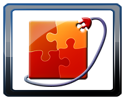Author: Bruce Byfield
Currently in late beta, the Sun Presenter Console (SPC) is Sun Microsystems’ latest extension for OpenOffice.org and StarOffice. Other extensions from Sun in the last year, such as the Sun PDF Import Extension, Sun Presentation Minimizer, and Sun Weblog Publisher, have sometimes been lacking in design and sometimes buggy, but all of them are so invaluable that you might wonder why they are extensions instead of new features. SPC is no exception. It gives slide show presenters a separate view of their presentation and some tools to help them organize and deliver their talks, but includes no indication of how to set it up or use it.

SPC is designed for OpenOffice.org 3.0 or the upcoming StarOffice 9.0 only, and does not work on earlier releases. Not only that, but SPC is one of the few extensions that is operating-system-specific, so you need to make sure that you download the correct file — all of which are called sun-presenter-screen.oxt, and have no indication of the platform for which they are intended. Moreover, while SPC installs like any extension from Tools -> Extension Manager, it has no configuration choices, so you should not be concerned that its Options button in the Extension Manager is grayed out.
You can’t use SPC unless you have at least two displays — two monitors, or one monitor and a projector — configured for your system, and the two displays cannot be set to mirror each other. Getting two displays working can require Web research on your hardware and video drivers, although enhanced support for XRandR in GNOME 2.24 may make the task easier if you use it.
After installation, you will not see any sign of SPC except in the Extension Manager. To use it, open your slide show in OOo Impress and go to Slide Show -> Slide Show Settings in the menu. Under Presentation monitor, select the display on which the audience will view the presentation. Once this setting is configured, SPC will start automatically on the other display, making it visible to you, but not to your audience.
SPC opens full-screen with a utilitarian gray background. The default view gives about a quarter of the screen to the current slide. The next slide displays at about half the size of the current one. Below that is a tool bar with a previous and next arrow on the left, followed by icons for SPC’s other views, a panel with the current time and the length of time that the slide show has been running, and, finally, a Help button. All these controls are conveniently large, so you should not have to squint, bend closer to the screen, or otherwise lose eye contact with your audience during the presentation.
In addition to the default view, SPC also has a Notes view, which means that, for the first time, your notes can be useful to you during a presentation, instead of being provided primarily for handouts. The Notes view has zoom buttons, but it is somewhat slow to change, so you are probably better off using a large font when writing the notes than relying on the zooms. In fact, you might consider using color, different font weights, and other formatting effects to make your notes easier to use during the show.
The Slides view is the SPC equivalent of the Slide Sorter view in Impress. Like the Slide Sorter, Slides displays all the slides in a presentation in rows and columns, as though on a light tray for physical slides. Although this view seems somewhat redundant, considering the default view, it can be useful for jumping around in the show beyond the previous, current, and next slides if you prefer to stay with mouse-driven controls.
The Help page is a collection of keyboard shortcuts. Pressing the Home key to jump to the presentation’s first slide, or a number followed by the Enter key for a specific key, is usually faster than using the Slides view or the Previous and Next buttons in SPC.
You can also find extra functionality on the Help page, such as Alt-Page Up and Alt-Page Down, which move to the previous or next slide respectively, but display them without running any special effects or animation that might be on them. If you ever have to return to a slide during your show — as often happens during the discussion at the end, in my experience — both you and your audience will probably appreciate not having to sit through the effects all over again.
All these are simple bits of functionality, but, if you regularly give presentations, you may quickly come to rely on them. You might wish for a less drab background for SPC, but a better question is why the extension comes with no more configuration help than a couple of sentences on the OpenOffice.org extensions site. Perhaps in the final release Sun’s developers will have the sense to include some basic information. Otherwise, this handy little extension may get far less use than it deserves.
Categories:
- Office Software
- Reviews


